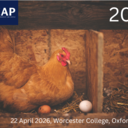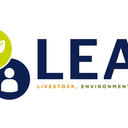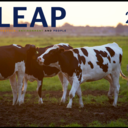Methane, meat and metrics

Methane, meat and metrics
Date posted: 10 November 2023
Authors: Myles Allen and Charles Godfray
We are both involved in debates in the United Kingdom and New Zealand on what needs to be done about greenhouse gas emissions from livestock. As an atmospheric physicist and a biologist, we approach the problem from different directions, and are often accused of being at odds. In a nutshell, we are not, and there is a broad consensus in the science community about livestock, emissions and climate change.
Reducing greenhouse gas emissions is essential to limiting climate change and nations, companies and other organisations are rightly setting ambitious reduction targets. This process is complicated by the different properties of the main greenhouse gases. Carbon dioxide, once released, continues to prop up global temperatures for thousands of years unless it is actively removed from the atmosphere. Therefore, the cumulative amount of carbon dioxide released by human activity over the last few centuries is the main driver of climate change, and only by reducing carbon dioxide emissions to net zero can we halt global warming.
The second most important greenhouse gas is methane and that is different. Though a molecule of methane causes more warming than one of carbon dioxide, its half-life in the atmosphere is much shorter – about a decade. This means that any increase in global methane emissions has a very large warming impact, any decrease can act to reduce global temperature, but a roughly level rate of global methane emissions causes very little additional warming (although, like net zero carbon dioxide emissions, it also does nothing about warming that methane emissions have caused in the past).
Policy makers need tools to compare the relative advantages of investing in carbon dioxide and methane emission reduction. Standard “carbon footprint” tools used by the UK and New Zealand governments (and just about everyone else) reflect the relative impact of methane and carbon dioxide emissions on global temperatures in about 40 years’ time. This is fine if you are exclusively interested in the state of the world in 2063, but most of us have broader concerns.
These standard tools under-estimate the impact of methane emissions on shorter-than-40-year timescales, and over-estimate it on longer ones. The errors are substantial: exaggerating the impact a steadily munching herd of cattle by a factor of three to four, while underestimating the impact of any increase or decrease in methane emissions by an even larger factor. Owners of steady herds are aggrieved. Those planning to increase their herds do well to keep quiet.
Emissions policies that aim to limit global warming should be informed by knowledge of the impact of decisions on global temperatures – that is why we favour complementing the traditional approach with “warming footprinting”, or “warming-equivalent emissions” (one of us, MA, has worked extensively on a simple way to calculate these, known as GWP*, recently adopted by the UK’s National Farmers Union as their preferred greenhouse gas comparison tool).
But this does not mean the livestock sector is off the hook, especially since global livestock emissions are still rising. It is true that we can imagine a future when net emissions of carbon dioxide have reached zero and methane emissions from a roughly stable global livestock herd cause little further global warming – our current metrics tend to over-estimate the long-term effects of this gas.
But the critical challenge for the world is to reduce warming in the short to medium term before climate impacts get much worse and any tipping points are passed. We need to buy time for the political and societal changes required to curb emissions. We also need time to develop carbon-neutral technologies and methods to remove carbon from the atmosphere and store it safely, most likely underground.
We have precious few tools that can be deployed today that reduce global temperatures rather than just prevent future warming. One is planting trees which sucks carbon dioxide out of the atmosphere, though if the forest is felled or burns much of this benefit is lost. But reducing methane emissions is another. Our current metrics underestimate the short term (over a few decades) cooling benefits of reducing methane emissions. That is a major reason why consuming fewer animal products helps the environment.
The livestock industry might claim it unfair that it must change to help mitigate the effects of emissions from other sectors. It might also point to some positive effects of sequestering and storing carbon in pastureland soils (though these are often exaggerated).
We make three points. First, we are literally all in it together. We need to act collectively, making progress wherever we can. Sector individualism and exceptionalism can only impede this.
Second, cooling the environment is a “public good” in both the colloquial and the technical economic sense. There is a strong rationale for paying livestock farmers to manage their land in different ways – with lower herd size and enhanced carbon storage.
Finally, there is great variation in the climate impact of different farms and production systems. We need to find ways to measure this and to reward the most climate-efficient farmers as well as encourage innovation. There is a clear opportunity here for the UK and New Zealand to work together to set an example to the world of countries that consume less meat and dairy but whose livestock farmers find export markets for their world-leading low-emissions products.
Myles and Charles spoke to BBC Farming Today to discuss the question of methane.
*Global-warming Potential
Myles Allen (physicist) and Charles Godfray (biologist) work at Oxford University on climate change and the food system. MA recently led a report on methane emissions for Beef+Lamb New Zealand and CG’s maternal family are dairy farmers in New Zealand.














